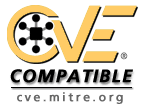Executive Summary
| Informations | |||
|---|---|---|---|
| Name | CVE-2025-25183 | First vendor Publication | 2025-02-07 |
| Vendor | Cve | Last vendor Modification | 2025-07-01 |
Security-Database Scoring CVSS v3
| Cvss vector : N/A | |||
|---|---|---|---|
| Overall CVSS Score | NA | ||
| Base Score | NA | Environmental Score | NA |
| impact SubScore | NA | Temporal Score | NA |
| Exploitabality Sub Score | NA | ||
| Calculate full CVSS 3.0 Vectors scores | |||
Security-Database Scoring CVSS v2
| Cvss vector : | |||
|---|---|---|---|
| Cvss Base Score | N/A | Attack Range | N/A |
| Cvss Impact Score | N/A | Attack Complexity | N/A |
| Cvss Expoit Score | N/A | Authentication | N/A |
| Calculate full CVSS 2.0 Vectors scores | |||
Detail
| vLLM is a high-throughput and memory-efficient inference and serving engine for LLMs. Maliciously constructed statements can lead to hash collisions, resulting in cache reuse, which can interfere with subsequent responses and cause unintended behavior. Prefix caching makes use of Python's built-in hash() function. As of Python 3.12, the behavior of hash(None) has changed to be a predictable constant value. This makes it more feasible that someone could try exploit hash collisions. The impact of a collision would be using cache that was generated using different content. Given knowledge of prompts in use and predictable hashing behavior, someone could intentionally populate the cache using a prompt known to collide with another prompt in use. This issue has been addressed in version 0.7.2 and all users are advised to upgrade. There are no known workarounds for this vulnerability. |
Original Source
| Url : http://cve.mitre.org/cgi-bin/cvename.cgi?name=CVE-2025-25183 |
CWE : Common Weakness Enumeration
| % | Id | Name |
|---|---|---|
| 100 % | CWE-354 | Improper Validation of Integrity Check Value |
CPE : Common Platform Enumeration
| Type | Description | Count |
|---|---|---|
| Application | 1 |
Sources (Detail)
Alert History
| Date | Informations |
|---|---|
| 2025-07-02 00:21:45 |
|
| 2025-02-08 05:20:29 |
|







